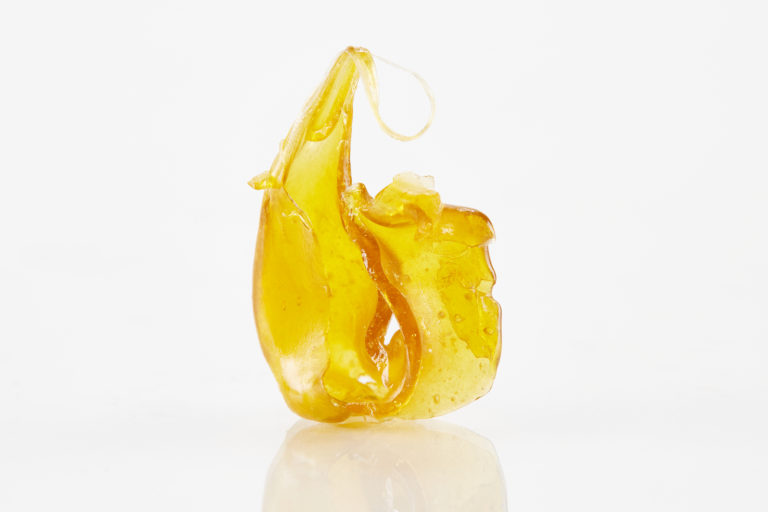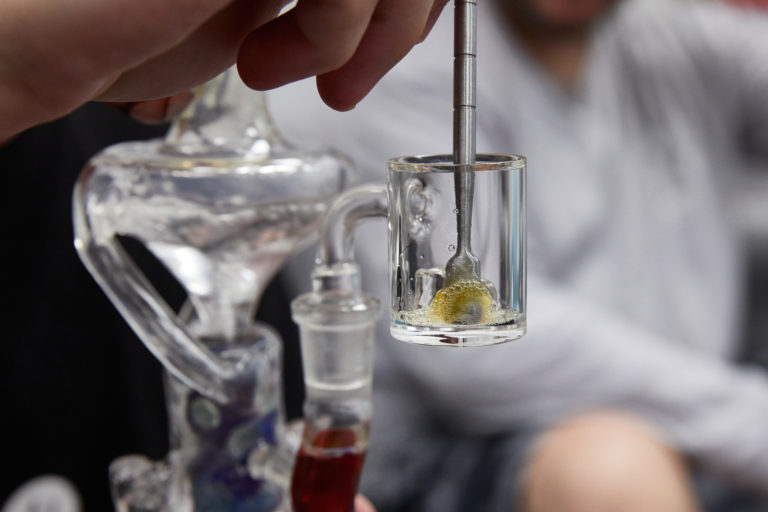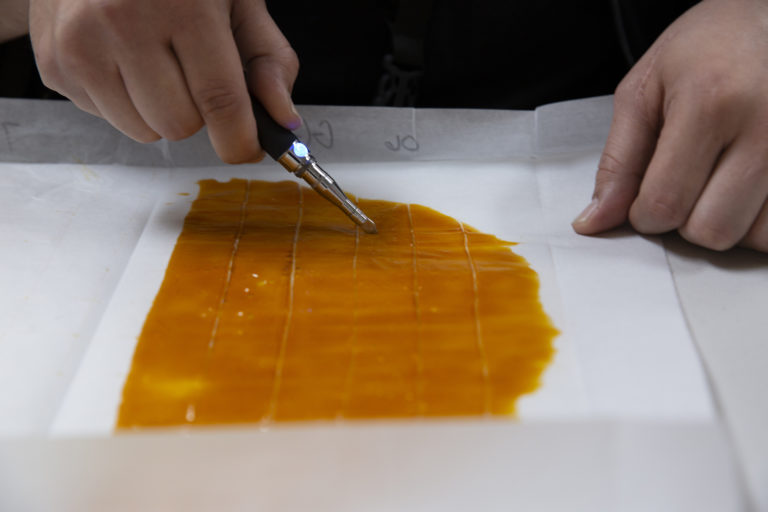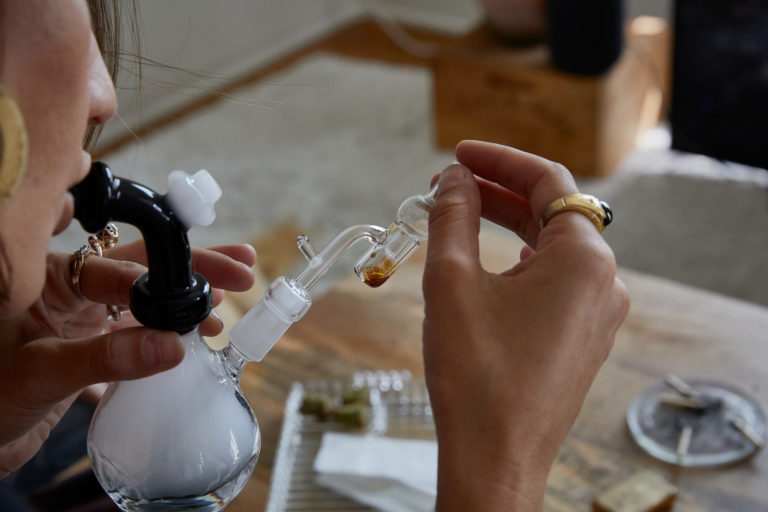What is shatter?
Shatter is a variety of cannabis concentrate produced by processing plant materials with a solvent. Shatter is typically translucent, with colors ranging from bright, honeyed amber to a darker yellow shade similar to olive oil. It's one of the many dabbable forms BHO can take.
 Photo by: Gina Coleman/Weedmaps
Photo by: Gina Coleman/WeedmapsImage lightbox

While shatter may seem consistent visually, the physical texture of shatter varies from product to product. Some is extremely brittle, while others have a taffy-esque pull-and-snap consistency. This range of textures provides some clues as to each product's cannabinoid profile.
Shatter with higher levels of THC tends to be sappier than its precursor tetrahydrocannabinolic acid (THCA), which is much more brittle. This is because THC is a sappy oil at room temperature, which gives products containing higher levels of THC a gooey texture. Conversely, THCA is solid at room temperature, making it easier to snap apart.
Although shatter is a relatively recent development in the realm of cannabis consumption, since it's a form of butane hash oil, its roots stretch back to the ancient practice of hashish production.
In the late 1990s, Canadian cannabis manufacturer BudderKing first released budder and shatter, with products hitting dispensary shelves a few years later in 2003. In 2005, the techniques for producing shatter and budder appeared in Cannabis Culture magazine.
 Photo by: Gina Coleman/Weedmaps
Photo by: Gina Coleman/WeedmapsImage lightbox

By the 2010s, shatter had established itself as a staple in the cannabis community, with dab rigs sitting proudly next to water bongs on many smoke shop shelves.
How is shatter made?
WARNING: THE MANUFACTURING OF SHATTER AND OTHER CANNABIS CONCENTRATES SHOULD ONLY BE PERFORMED BY PROFESSIONALS AS THESE PROCESSES CAN BE EXTREMELY DANGEROUS AND ILLEGAL IN MANY JURISDICTIONS.
For safety and health reasons, producing shatter should be left to professionals, as the safety precautions and equipment requires precision, accuracy, and expertise.
 Photo by: Gina Coleman/Weedmaps
Photo by: Gina Coleman/WeedmapsImage lightbox

The method for producing shatter is very similar to most other concentrates — the main difference lies in the post-extraction process. Extractors typically make shatter through the following steps:
- Select a starting cannabis material(s).
- Pack the material into the material column, a tank inside the closed-loop system that is dedicated to holding the nugs or trim throughout the process.
- Chill the solvent of choice.
- Slowly pass the solvent over the cannabis material to release the trichomes.
- Remove the solvent from the solution via vaporization by using heat.
- Chill the solvent tank to recapture and condense the solvent vapors.
Shatter can be created from almost any cannabis material, from flower to trim. During production, the desired cannabinoids are separated from raw cannabis through a process that includes heat and compression. Following this, any unwanted plant materials are removed using a solvent-induced vacuum purge.
Extractors use a variety of solvents and processes to create shatter, the most common of which is butane hash oil (BHO) extraction. Carbon dioxide (CO2) is more often used for other cannabis concentrates, as CO2 removes moisture from the plant matter and causes shatter to lose its characteristic texture.
How long does it take to purge shatter?
The ultra-low temperatures and pressure utilized during a shatter purge are what give shatter its signature glass-like appearance. Temperatures range between 85-100 degrees Fahrenheit (29.44-37.77 degrees Celsius) with a pressure of -29 inches of mercury (inHg). A complete purge lasts anywhere from eight to 24 hours.
How is shatter different from other concentrates?
Though shatter varies in texture, consistency, and color from other extracts, the creation of shatter follows a similar production process. Perhaps due, at least in part, to its shimmery appearance, shatter is often considered the purest, highest form of cannabis concentrate. However, if particular elements are mishandled during production, such as the initial extraction or vacuum purge, the resulting shatter may not turn out as desired. Even improper storage could compromise the pristine translucence of the shatter.
Other factors also can affect shatter production. High temperatures, residual solvents, agitation, or unwanted moisture from the starting cannabis material can cause the concentrate to end up as a budder instead of creating the easy snap-off or brittle texture of shatter. And any concentrate is only as good as, or high in cannabinoids and terpenes as, the original cannabis material.
Many dabbers prefer shatter due to its high potency and the ease of transporting and using a concentrate that is stable where just a little dab will do.
 Photo by: Gina Coleman/Weedmaps
Photo by: Gina Coleman/WeedmapsImage lightbox


